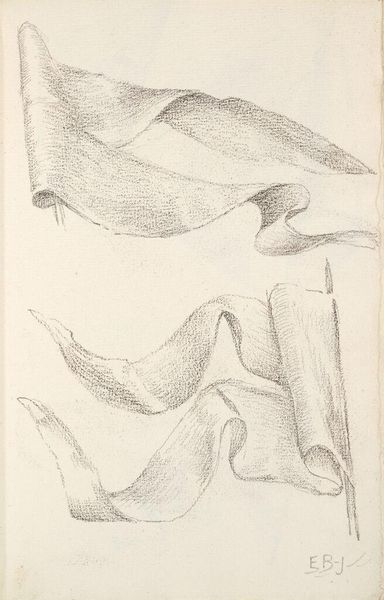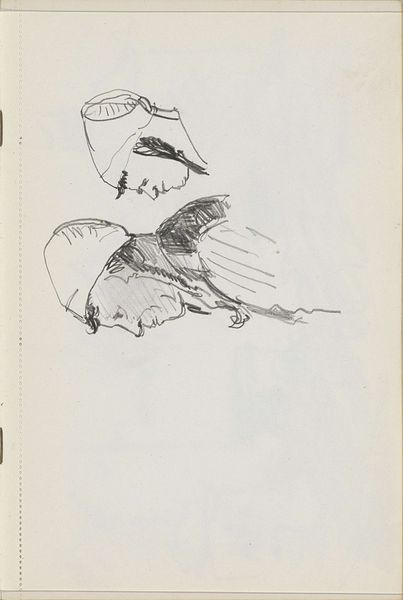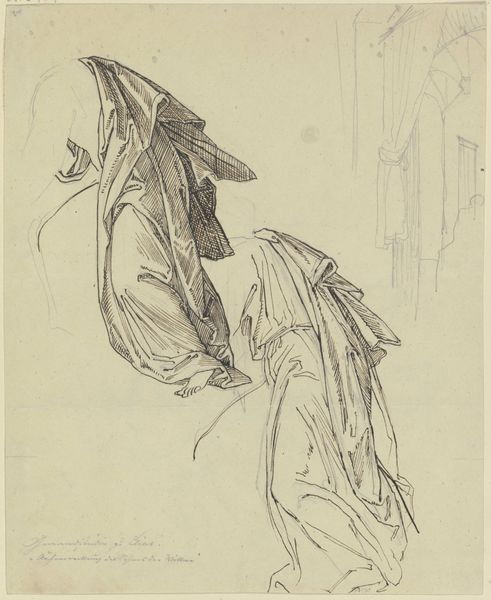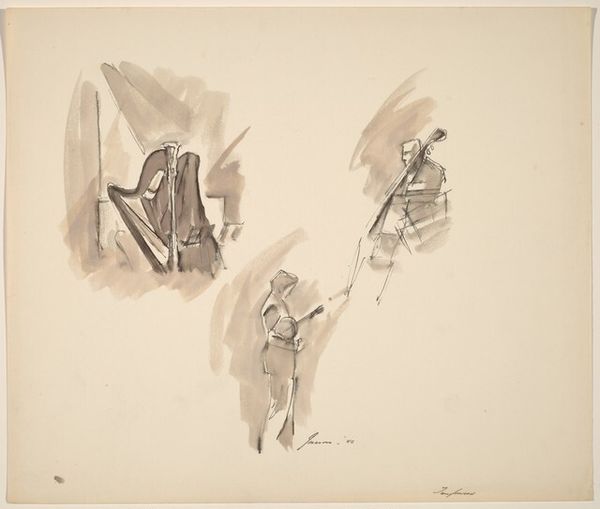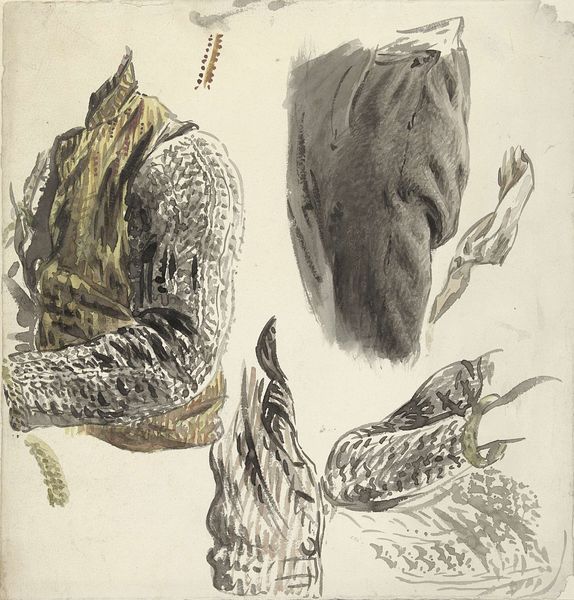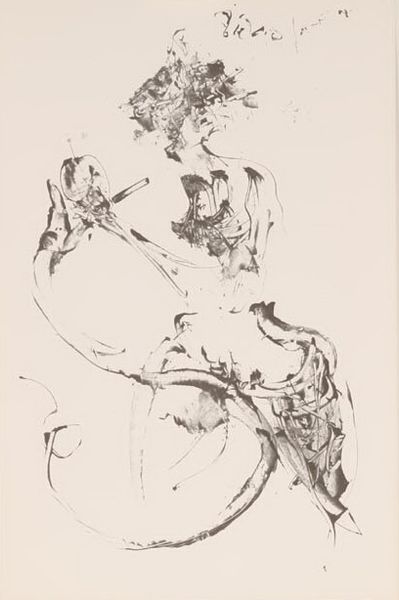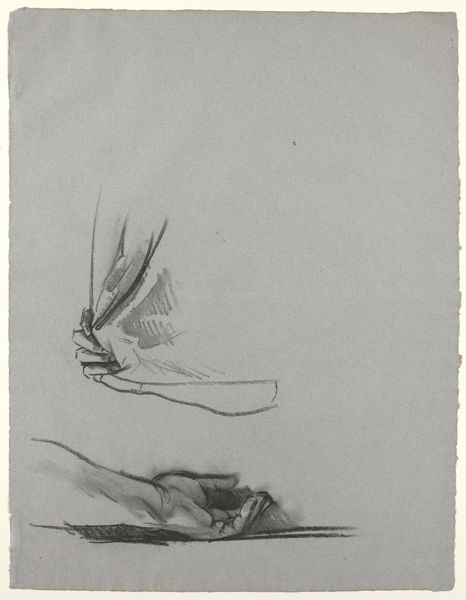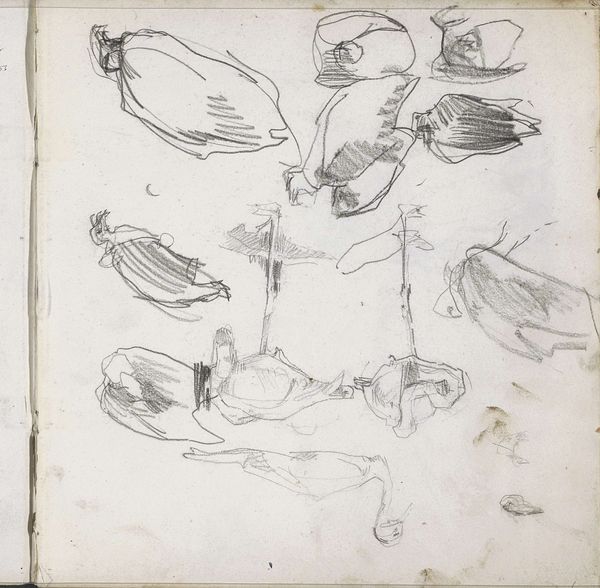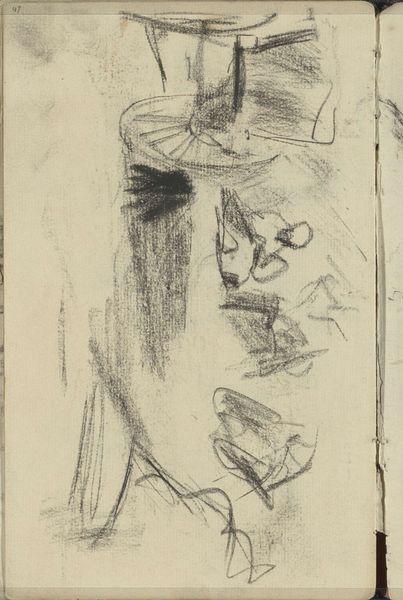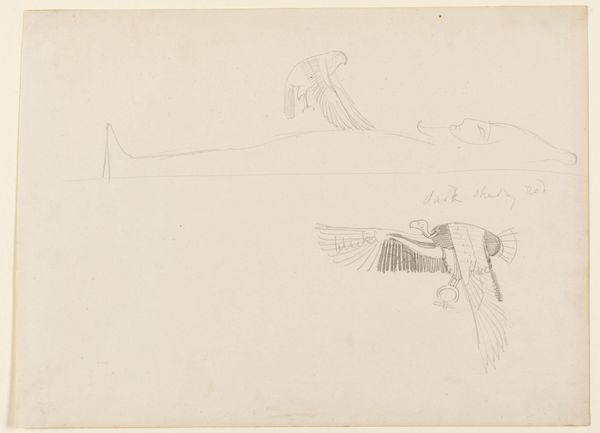
drawing, paper, ink
#
drawing
#
charcoal drawing
#
figuration
#
paper
#
abstract
#
ink
Copyright: Vasile Kazar,Fair Use
Curator: Here we have an Untitled piece by Vasile Kazar, made with drawing in ink and charcoal on paper. It's listed as abstract figuration. What are your initial thoughts? Editor: Well, it strikes me as unsettling. The floating forms, the ambiguous figures… there’s a definite air of unease. Like a half-remembered dream drifting just beyond reach. Curator: It certainly presents a fascinating challenge to interpretation. The blending of ink and charcoal creates a fluid, almost ghostly effect. Considering Kazar’s context, we see an artist working within the broader framework of post-war abstraction. These fragmented forms might be interpreted as representing the fragmented experience of modern life after conflict. Editor: The symbolic ambiguity is definitely powerful. I'm drawn to the uppermost image; it's quite bird-like in shape. Birds traditionally represent freedom or spiritual ascent, but here, it's rendered in such a distorted way that suggests those aspirations are somehow corrupted or unattainable. It could even represent an archaic power, corrupted over the passage of time. Curator: I think that's insightful. The socio-political element might be reflected not only in broad, historical terms, but also more directly in the politics of representation. Who gets depicted, and how? It could be that these abstract forms give way to repressed groups and their associated struggles. Editor: The use of charcoal, with its inherent connection to ash and ruin, furthers this interpretation, creating a melancholic quality. It makes you wonder about its cultural associations. Perhaps for some viewers, these ambiguous forms even echo specific moments in cultural memory—times of crisis, periods of societal upheaval. The figures feel trapped within these dark lines and blurry shapes. Curator: Precisely. The overall effect destabilizes fixed meanings. It asks us to question not just what we are seeing, but how and why we are seeing it in a particular way. I see in Kazar’s choice of medium also the echoes of institutional collections, their ability to both give presence to artworks like this while determining our experience with them. Editor: So, on the one hand we are presented with fragmentation and ambiguity, while on the other the entire work subtly encourages introspection around how society preserves and engages with these fragments. Curator: Exactly. Art like this holds up a mirror. Editor: Indeed. It’s a stark reminder that even the most abstract forms carry within them a wealth of potential stories.
Comments
No comments
Be the first to comment and join the conversation on the ultimate creative platform.

